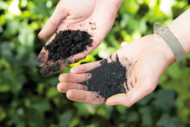 |
||||||||||||||||
January 2026 Newsletter
|
||||||||||||||||
Start the New Year with Increased Energy EfficiencyHappy 2026! It’s been warmer than usual this holiday; however, lower temperatures are forecasted for the next few months, and the unusually high temperatures will quickly become a distant memory. We depend upon cozy, warm homes to provide the basic comforts and necessities of shelter for survival and well-being. Unfortunately, poor energy efficiency can make this important warmth come at a steep cost. Homes and commercial buildings account for 40% of energy consumption in the United States, and for every $2,000 annual expenditure, $200 to $400 could be wasted simply due to drafts, air leaks around openings, and outdated heating and cooling systems. For many households, particularly those in frontline communities, energy bills can consume 16-20% of a family's income, forcing difficult trade-offs between warmth, food, and medicine. However, simple energy-efficiency upgrades like insulation, appliance replacement, and ventilation repair can deliver real benefits in both comfort and cost. These straightforward strategies are especially important for low-income households and are covered through the State’s Community Energy Efficiency Development (CEED) program. The County is rolling out the energy efficiency program for low-income households, which, once screened for eligibility, may receive up to $16,000 in weatherization and appliance improvements to substantially lower utility bills while making homes more comfortable and climate-friendly. There are a variety of other programs available through the County, such as the Home Rehabilitation and Energy Efficiency Program (HREE), for low-income households located in the unincorporated areas of the County. While HREE focuses on improvements to structural integrity and safety concerns, CEED focuses on lowering energy costs. For questions about CEED eligibility and criteria, reach out to the Sustainability team at sustainability@santafecountynm.gov. The flyer below outlines additional rebates, energy-saving programs, and financial assistance options for the surrounding communities in our region. A Spanish version of the flyer is available here. Learn more on the Coalition of Sustainable Communities Resilient Homes New Mexico webpage, which is part of a new statewide storytelling campaign highlighting the power of residential energy efficiency.
Forth Mobility Electric Car-Share Program
What Can I Do? Recycle Your Christmas Tree!
|
||||||||||||||||
|
||||||||||||||||
SharingSustainability Questions?We are your local advisors on all things sustainability in Santa Fe County. Feel free to reach out if you have any questions. Jacqueline Beam, jybeam@santafecountynm.gov Will Donahoo, wdonahoo@santafecountynm.gov Elizabeth Houghton, ehoughton@santafecountynm.gov |











